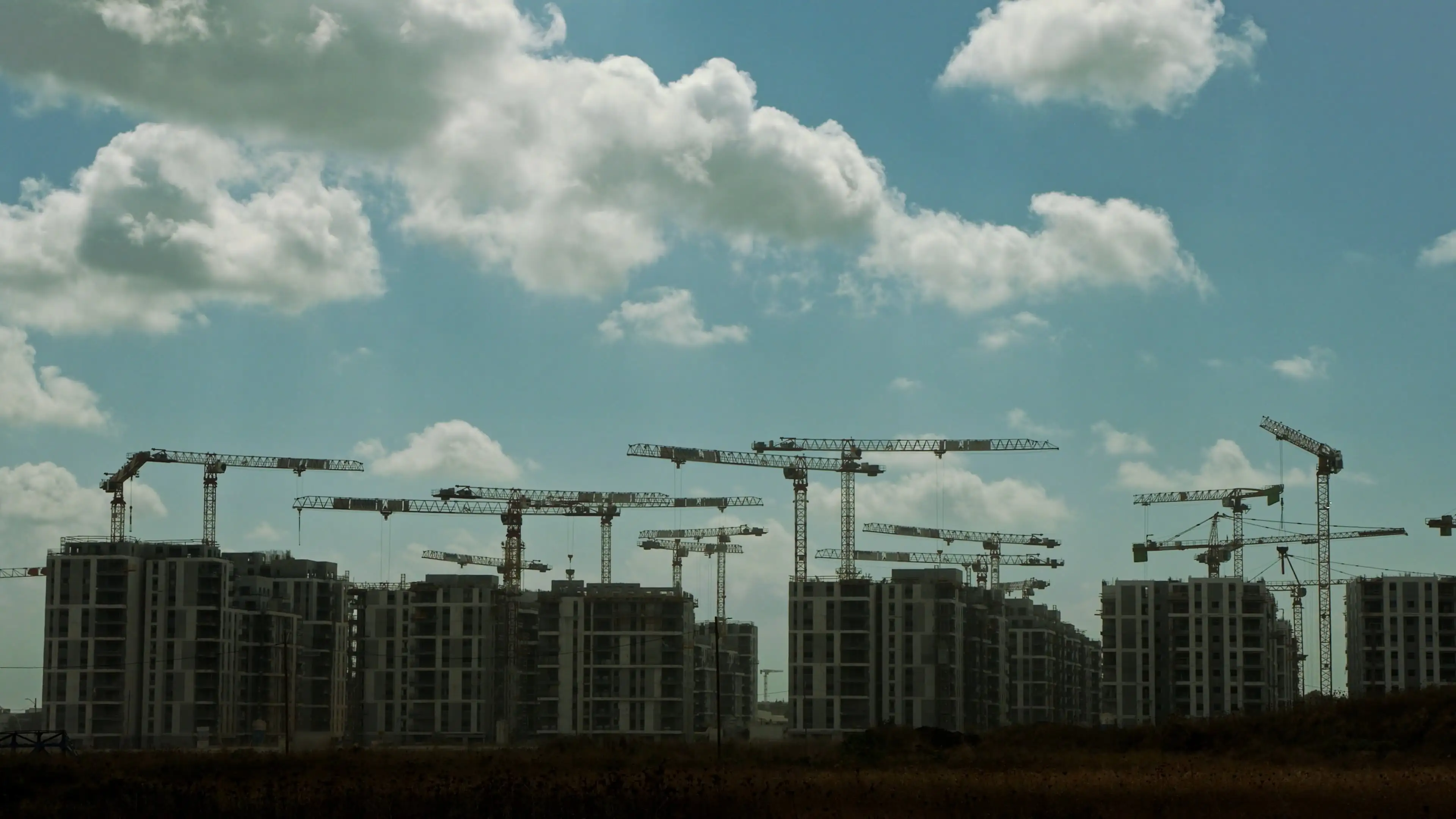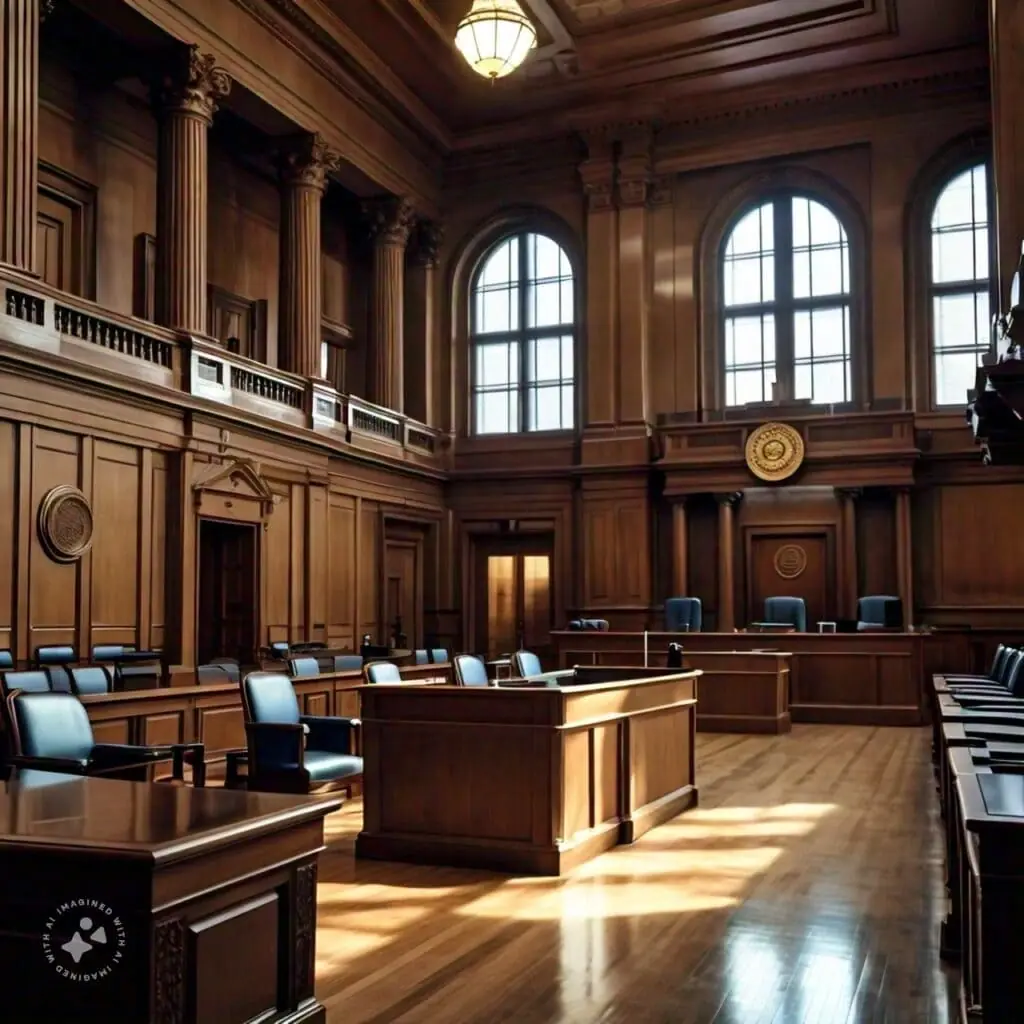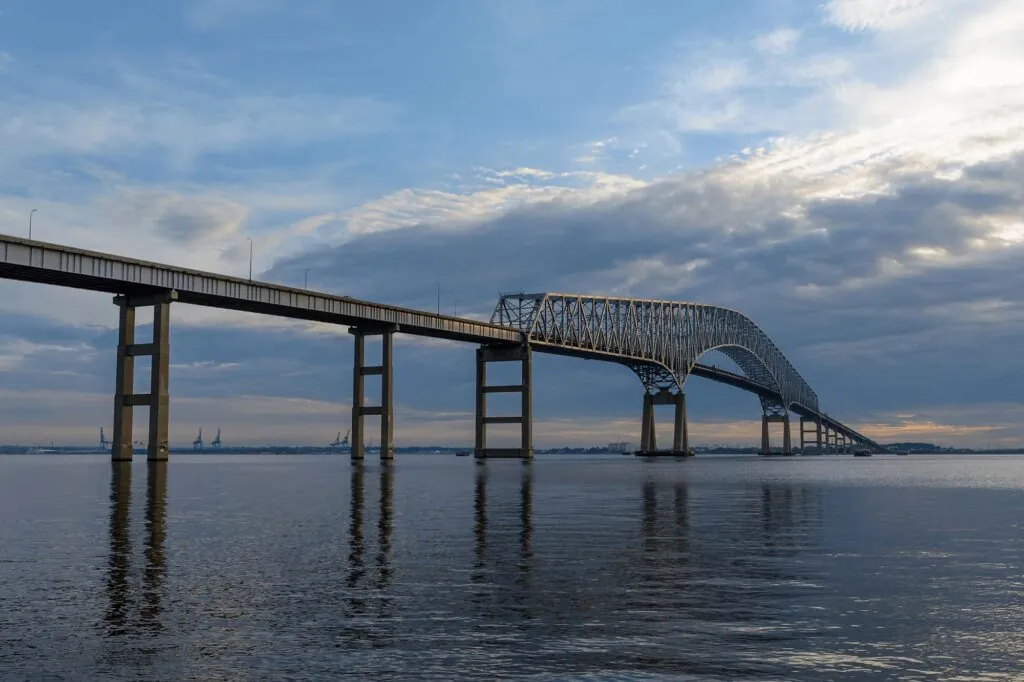Philadelphia Crane Accidents Lawyer
Crane accidents are among the most dangerous and devastating incidents that can occur on construction sites. These accidents often result in severe injuries or fatalities due to the massive size and weight of cranes. Understanding the legal complexities involved in crane accidents is crucial for victims seeking compensation.
Fulginiti Law, a leading personal injury law firm based in Philadelphia, PA, specializes in representing individuals affected by construction accidents, including crane mishaps. With extensive experience and a commitment to client advocacy, Fulginiti Law is dedicated to securing justice and fair compensation for those injured in crane accidents.
Common Causes of Crane Accidents
Crane accidents can occur due to various factors, including mechanical failures, operator errors, improper crane setup, and adverse weather conditions. Overloading the crane, poor communication among workers, and inadequate training also contribute to these accidents.
Types of Injuries Sustained in Crane Accidents on Construction Sites
Crane accidents on construction sites can lead to various injuries, ranging from minor to fatal. The nature of these injuries often depends on the specifics of the accident, including the type of crane involved, the working environment, and safety measures in place. Here’s a detailed look at the types of injuries that can occur:
1. Crush Injuries
Crush injuries happen when a worker’s body part is caught, squeezed, or compressed between two objects. In crane accidents, this can occur if a crane collapses, tips over, or if workers are caught between the crane and another surface.
- Severity: These injuries can range from mild, such as bruises, to severe, including broken bones, internal injuries, and even amputations.
- Impact: Severe crush injuries can lead to long-term disability and require extensive medical treatment and rehabilitation.
2. Falls
Falls are common in construction sites and can occur due to improper use of cranes, malfunctioning equipment, or lack of proper safety harnesses.
- Severity: The injuries from falls can range from minor cuts and bruises to severe trauma, including fractures, spinal cord injuries, and head injuries.
- Impact: Serious falls can result in permanent disability or death. They also contribute to significant medical expenses and loss of work time.
3. Electrocution
Electrocution injuries are a risk when cranes come into contact with power lines. Cranes that are not properly grounded can also pose a hazard.
- Severity: Electrocution can cause burns, cardiac arrest, nerve damage, and sometimes death.
- Impact: Survivors of electrocution often face long-term health issues, including neurological damage and chronic pain.
4. Struck-by Object
Workers can be struck by objects falling from cranes, swinging crane loads, or parts of the crane itself.
- Severity: Injuries from being struck by objects can include lacerations, fractures, concussions, and internal injuries.
- Impact: Depending on the object and the force of impact, these injuries can be fatal or cause long-term health complications.
5. Overexertion and Repetitive Stress Injuries
Operating cranes often requires prolonged periods of attention and repetitive motions, which can lead to overexertion and stress injuries.
- Severity: These injuries might not be immediately noticeable but can lead to chronic pain, tendinitis, and other musculoskeletal disorders.
- Impact: Over time, repetitive stress injuries can limit a worker’s ability to perform tasks, leading to decreased productivity and increased time off work.
6. Lacerations and Abrasions
Sharp edges, moving parts, and falling debris can cause lacerations and abrasions.
- Severity: These injuries can range from superficial cuts to deep lacerations requiring stitches or surgery.
- Impact: While often less severe than other injuries, lacerations and abrasions can still lead to infections and require medical treatment.
7. Traumatic Brain Injuries (TBI)
Traumatic brain injuries occur from blows to the head, often due to falls, being struck by objects, or crane malfunctions.
- Severity: TBIs can vary from mild concussions to severe brain damage.
- Impact: Severe TBIs can lead to cognitive impairment, loss of motor skills, and even permanent vegetative states.
8. Burns
Burn injuries can result from electrical accidents, contact with hot surfaces, or exposure to hazardous materials.
- Severity: Burns can be first, second, or third-degree, with third-degree burns being the most severe, potentially affecting muscles and bones.
- Impact: Severe burns require long-term treatment, including skin grafts and rehabilitation, and can lead to permanent disfigurement.
9. Spinal Cord Injuries
These injuries often result from falls or being struck by heavy objects and can lead to partial or complete paralysis.
- Severity: Spinal cord injuries are among the most serious, potentially resulting in quadriplegia or paraplegia.
- Impact: Such injuries require lifelong care and significantly impact the victim’s quality of life and ability to work.
10. Internal Injuries
Internal injuries can result from blunt force trauma, falls, or crush injuries and may involve damage to organs, internal bleeding, and other serious complications.
- Severity: These injuries can be life-threatening and often require immediate surgery.
- Impact: Recovery can be lengthy, involving extensive medical care and rehabilitation.
11. Amputations
Amputations occur when a limb or extremity is severed due to a crane accident, often as a result of crushing injuries or entanglement in crane mechanisms.
- Severity: Amputations are severe injuries that can lead to significant blood loss, shock, and require immediate medical attention.
- Impact: These injuries result in permanent disability, necessitating prosthetics and extensive rehabilitation. The psychological impact on the victim can also be profound.
12. Soft Tissue Injuries
These injuries include damage to muscles, tendons, and ligaments, often resulting from overexertion, sudden movements, or being struck by crane components.
- Severity: Soft tissue injuries can range from minor strains and sprains to severe tears.
- Impact: Recovery can involve prolonged rest, physical therapy, and sometimes surgery. Chronic pain and long-term mobility issues are common.
13. Eye Injuries
Eye injuries can result from exposure to flying debris, dust, or chemical spills during crane operations.
- Severity: Eye injuries can be minor, such as irritation or scratches, to severe, including partial or total vision loss.
- Impact: Severe eye injuries can lead to permanent blindness, significantly affecting the victim’s quality of life and ability to work.
14. Hearing Loss
Hearing loss can occur due to exposure to loud noises from crane operations or explosions related to crane accidents.
- Severity: Hearing loss can be temporary or permanent and can range from mild to profound.
- Impact: Permanent hearing loss can require the use of hearing aids and impact communication, social interactions, and job performance.
15. Heat Stress and Heat Stroke
Crane operators and workers can suffer from heat stress or heat stroke, especially in hot weather conditions, due to prolonged exposure to high temperatures and strenuous activity.
- Severity: Heat stress can lead to dehydration and heat exhaustion, while heat stroke is a medical emergency that can cause organ damage or death.
- Impact: Severe cases can lead to long-term health issues and require immediate medical intervention.
16. Psychological Injuries
Crane accidents can also result in psychological injuries, including post-traumatic stress disorder (PTSD), anxiety, and depression.
- Severity: Psychological injuries can be as debilitating as physical injuries and often require long-term therapy and support.
- Impact: These injuries affect mental health, leading to difficulty in returning to work, maintaining relationships, and performing daily activities.
17. Chemical Burns and Poisoning
Exposure to hazardous chemicals during crane operations can result in chemical burns or poisoning, especially if the crane is involved in transporting or operating near toxic substances.
- Severity: Chemical burns can cause severe skin damage, while poisoning can affect internal organs and be life-threatening.
- Impact: Long-term treatment and monitoring are often required, and there can be permanent damage or disability.
18. Respiratory Injuries
Respiratory injuries can occur from inhaling dust, fumes, or other harmful substances released during crane accidents.
- Severity: These injuries can lead to chronic respiratory conditions such as asthma or more severe conditions like lung disease.
- Impact: Ongoing medical treatment and lifestyle changes are often necessary, with significant impacts on the victim’s health and ability to work.
19. Blunt Force Trauma
Blunt force trauma occurs when a worker is struck by parts of the crane, equipment, or materials being moved by the crane.
- Severity: These injuries can range from bruises and contusions to severe internal bleeding and organ damage.
- Impact: Recovery can be lengthy, involving surgery and extensive rehabilitation, with potential long-term health effects.
20. Multiple Fractures
Multiple fractures can happen when a worker is caught in a crane collapse or is struck by falling debris.
- Severity: These injuries are typically severe, involving several broken bones that may require multiple surgeries.
- Impact: Recovery is often prolonged and can involve physical therapy, with potential permanent impairment and loss of mobility.
Crane accidents on construction sites present a wide array of injury risks. Ensuring safety measures, proper training, and adherence to regulations are critical to minimizing these dangers. Each type of injury not only affects the immediate health and safety of workers but also has long-term implications for their well-being and ability to work. Implementing comprehensive safety protocols and regular equipment maintenance can significantly reduce the occurrence and severity of crane-related injuries.
Legal Framework for Crane Accidents
OSHA Regulations and Safety Standards
The Occupational Safety and Health Administration (OSHA) is a key regulatory body overseeing crane safety in the United States. OSHA’s regulations are designed to protect workers by setting forth comprehensive safety standards that must be followed on construction sites. Key OSHA regulations related to crane operations include:
Crane Certification and Training
OSHA requires that crane operators be properly trained and certified to operate cranes safely. This includes understanding crane mechanics, load charts, and the specific safety protocols associated with different types of cranes.
Equipment Maintenance
Regular maintenance and inspections of cranes are mandated to ensure that all components are functioning correctly and to identify any potential issues before they lead to accidents. This includes routine checks and repairs as well as adhering to manufacturer recommendations.
Load Limits and Rigging
OSHA standards specify the maximum load limits for different types of cranes and require proper rigging techniques to ensure that loads are secured and evenly distributed. This helps prevent overloading and shifting that could lead to accidents.
Environmental Conditions
Cranes must not be operated under hazardous weather conditions such as high winds or lightning, as these can significantly impact their stability and control.
Compliance with these regulations is crucial for reducing the risk of crane accidents and ensuring that all safety measures are in place to protect workers.
Employer Responsibilities and Liability
Employers in the construction industry have a legal and ethical duty to provide a safe working environment. This responsibility includes:
Training and Supervision
Employers must ensure that all crane operators and workers involved in crane operations receive proper training and supervision. This training should cover safe operation procedures, emergency response, and adherence to OSHA standards.
Equipment Safety
Employers are responsible for maintaining cranes and other equipment in good working condition. This includes conducting regular inspections, servicing, and repairs to address any mechanical issues that could lead to accidents.
Worksite Safety
Employers must implement safety protocols to address potential hazards, such as ensuring proper signage, maintaining clear communication among workers, and providing personal protective equipment (PPE).
Record Keeping
Accurate records of equipment maintenance, operator training, and safety incidents must be maintained to demonstrate compliance with regulations and to support any investigations following an accident.
Failure to uphold these responsibilities can result in legal liability for accidents and injuries. If an employer neglects safety standards or fails to address known risks, they may be held accountable for any resulting harm.
Worker’s Compensation vs. Personal Injury Claims
Workers injured in crane accidents have several avenues for seeking compensation:
Worker’s Compensation Claims
This no-fault system provides benefits to employees who are injured on the job, covering medical expenses, lost wages, and a portion of disability benefits. Workers’ compensation claims are generally the first line of recourse for injured workers and do not require proof of employer negligence.
Personal Injury Claims
In cases where a crane accident is caused by negligence or wrongdoing, such as defective equipment or third-party involvement, workers may pursue personal injury claims. These claims can seek additional damages beyond those provided by workers’ compensation, including pain and suffering, emotional distress, and loss of quality of life.
Third-Party Claims
If the crane accident involves a third party, such as a subcontractor or equipment manufacturer, the injured worker may have the option to file a claim against that third party for damages.
Navigating the legal landscape of crane accidents involves understanding both workers’ compensation and potential personal injury claims. Seeking legal advice ensures that injured workers can pursue the full extent of their rights and secure fair compensation for their injuries.
Investigating Crane Accidents
Gathering Evidence: Witnesses, Photos, and Reports
A comprehensive investigation into a crane accident requires meticulous evidence collection:
Witness Statements
These are invaluable for providing firsthand accounts of the accident. Witnesses can describe the sequence of events, the behavior of the crane, and any unusual occurrences leading up to the incident. Interviewing witnesses promptly ensures the accuracy of their recollections.
Photographic Evidence
Photos and videos of the accident scene, the crane, and any damaged structures or equipment are critical. They help to visually document the conditions and can reveal factors such as equipment positioning, weather conditions, and potential hazards. Detailed images of the crane’s components can highlight mechanical failures or improper rigging.
Incident Reports
Official documents from safety inspectors, employers, and emergency responders provide structured information about the accident. These reports often include initial findings, witness lists, and a preliminary assessment of the cause. They are essential for creating a formal record of the incident and supporting further legal or insurance claims.
Role of Expert Witnesses
Expert witnesses bring specialized knowledge that can be pivotal in understanding the complexities of crane accidents. Their expertise includes:
Mechanical Analysis
Engineers and safety inspectors can examine the crane’s mechanical systems to identify failures, wear and tear, or design flaws that may have contributed to the accident. They can assess whether maintenance and inspection protocols were followed correctly.
Safety Compliance
Experts can evaluate whether the operation adhered to OSHA regulations and industry standards. They can identify breaches in safety protocols, insufficient training, or improper use of equipment.
Accident Reconstruction
Using evidence from the scene, experts can reconstruct the accident to determine how it occurred. This involves analyzing the crane’s load at the time of the accident, the sequence of events, and the interaction of different factors that led to the incident. Their testimony can provide clarity and support in legal proceedings.
Importance of Timely Investigation
Prompt investigation of crane accidents is crucial for several reasons:
Preservation of Evidence
The sooner an investigation begins, the better the chances of preserving critical evidence. Physical evidence at the accident site can be disturbed or degraded over time, making it harder to piece together what happened.
Accurate Witness Testimonies
Witnesses are more likely to recall details accurately when interviewed soon after the event. Memories can fade or become distorted, so early statements are often more reliable and detailed.
Legal and Insurance Processes
A timely investigation supports legal claims and insurance settlements by providing a clear, well-documented account of the accident. This helps in determining liability and securing fair compensation for the injured parties.
A comprehensive and timely investigation not only aids in understanding the cause of the accident but also strengthens legal claims and helps ensure that justice is served for the victims.
Pursuing Compensation
Types of Damages: Medical Expenses, Lost Wages, Pain and Suffering
Victims of crane accidents can pursue various types of damages:
Medical Expenses
Compensation for hospital bills, surgeries, medications, rehabilitation, and any ongoing medical care required due to the accident.
Lost Wages
Reimbursement for income lost during recovery and any diminished earning capacity if the injury affects future employment.
Pain and Suffering
Damages for physical pain, emotional distress, and the overall impact on the victim’s quality of life. This can include compensation for mental anguish, depression, and loss of enjoyment of life.
Calculating Long-term Costs and Rehabilitation
Determining the full extent of damages includes assessing long-term costs associated with the injury:
Future Medical Care
Estimations of future medical treatments, including surgeries, physical therapy, and assistive devices.
Ongoing Rehabilitation
Continuous physical and occupational therapy to help the victim regain functionality.
Home Modifications
Costs for modifying the home to accommodate disabilities, such as installing ramps, railings, and other accessibility features.
Vocational Training
Expenses related to retraining or education if the victim can no longer perform their previous job.
Settlement vs. Trial: Pros and Cons
Victims can choose to settle their claims out of court or pursue a trial:
Settlement
- Pros: Faster resolution, guaranteed compensation, reduced legal fees, and less stress for the victim.
- Cons: May result in lower compensation than what might be awarded at trial.
Trial
- Pros: Potential for higher compensation, public acknowledgment of wrongdoing, and a sense of justice.
- Cons: Longer process, higher legal fees, and the uncertainty of the outcome.
Understanding the types of compensation available and the pros and cons of settling versus going to trial helps victims make informed decisions about pursuing their claims. It ensures they receive fair compensation for their injuries and losses.
How Fulginiti Law Can Help
Fulginiti Law’s Expertise in Construction Accident Cases
Fulginiti Law has extensive experience handling construction accident cases, including crane accidents. Our attorneys possess a deep understanding of the complexities involved and are well-versed in the relevant laws and regulations. Our expertise ensures that clients receive knowledgeable and effective representation.
The Process of Working with Fulginiti Law
When working with Fulginiti Law, clients can expect a thorough and compassionate approach. We conduct detailed investigations, gathers all necessary evidence, and consults with expert witnesses to build a strong case. We guide clients through every step of the legal process, from initial consultation to final resolution, ensuring that their rights are protected and their needs are met.
By leveraging our extensive experience and client-focused approach, Fulginiti Law provides exceptional legal assistance to victims of crane accidents, helping them secure the compensation they deserve.



